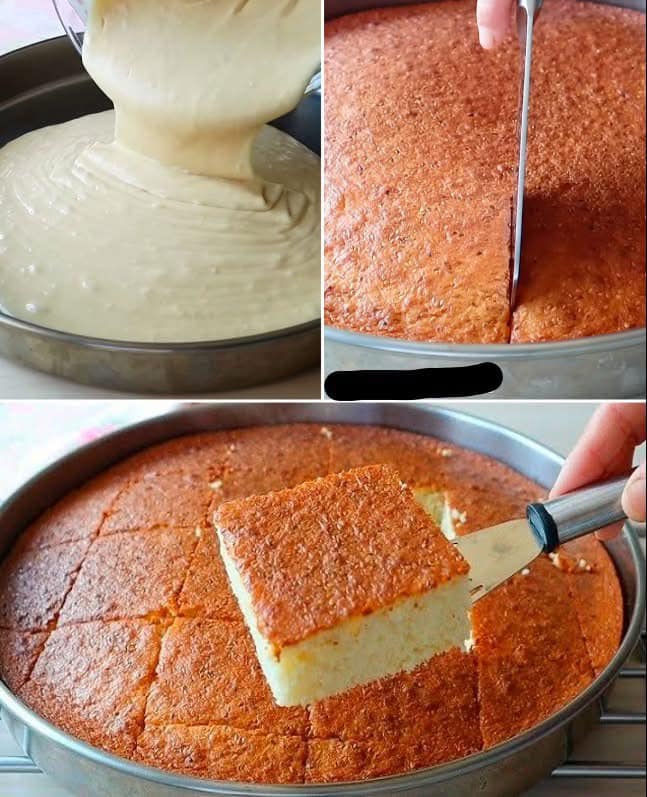ADVERTISEMENT
How to Make Milk Cake
Step 1: Prepare the Milk
- In a heavy-bottomed pan, add the full-fat milk and bring it to a boil over medium heat. Stir occasionally to prevent the milk from sticking to the bottom of the pan.
- Once the milk begins to boil, reduce the heat to low and continue stirring to prevent it from overflowing or forming a skin on the surface.
Step 2: Curdle the Milk
- Slowly add the lemon juice or vinegar to the boiling milk, stirring gently. The milk will start to curdle and separate into curds (solid) and whey (liquid).
- Keep stirring until the milk fully curdles. If needed, add a little more lemon juice or vinegar until the milk is fully curdled.
Step 3: Cook the Curdled Milk
- Once the milk has curdled, continue cooking on low heat while stirring frequently. As the whey evaporates, the mixture will begin to thicken.
- Add the ghee and sugar to the curdled milk and stir well. Cook the mixture for about 10-15 minutes, until it starts to thicken and forms a soft, dough-like consistency.
- If you like, you can add a pinch of cardamom powder or saffron strands at this point for added flavor and fragrance.
Step 4: Set the Milk Cake
- Grease a small dish or plate with ghee to prevent sticking. Once the mixture has thickened, transfer it to the greased dish and flatten it out evenly.
- Let the milk cake cool to room temperature. As it cools, it will firm up and take on a slightly fudgy texture.
- If you prefer, garnish with chopped nuts or additional saffron strands for a decorative touch.
Step 5: Cut and Serve
- Once the milk cake has cooled and set, cut it into small squares or pieces.
- Serve the milk cake as a dessert, snack, or a sweet treat with your afternoon tea.
Tips for the Perfect Milk Cake
- Use Full-Fat Milk: For the creamiest texture and the best flavor, always use full-fat milk. Low-fat or skim milk won’t yield the same rich results.
- Don’t Rush the Process: Take your time while cooking the milk down. It’s important to cook the mixture until it thickens properly.
- Customize the Flavor: You can experiment with different flavorings like rose water, vanilla extract, or even a dash of cinnamon for a unique twist on the traditional milk cake.
- Avoid Overheating: Keep the heat low and stir constantly to prevent burning or scorching the milk mixture.
Serving Suggestions
- With a Cup of Tea: Milk cake pairs wonderfully with tea, especially during festive occasions or when you’re craving something sweet to accompany your drink.
- As a Dessert: This cake makes a simple yet elegant dessert for family gatherings or dinners.
- With Nuts and Saffron: Add a garnish of chopped almonds, pistachios, or cashews, along with saffron strands, for extra texture and flavor.
Why This Recipe Works
The beauty of milk cake lies in its simplicity. By curdling the milk and reducing it down to a thick, creamy consistency, you create a rich and velvety dessert that’s both satisfying and comforting. The sugar and ghee bring out the natural sweetness and smoothness of the milk, while the addition of cardamom and saffron adds a delicate, aromatic flavor.
With just a few ingredients and some patience, you can make this incredibly delicious and versatile treat. Whether you want to enjoy it as a sweet snack or serve it for a celebration, milk cake is sure to win over anyone who tastes it.
Conclusion
This milk cake recipe proves that sometimes the simplest desserts are the best. With just a few ingredients and minimal effort, you can create a rich, creamy, and flavorful cake that’s perfect for any occasion. Whether you serve it at a festive gathering, with afternoon tea, or as a sweet treat for yourself, milk cake is a dessert that everyone will love.
Give this recipe a try, and you’ll discover just how easy it is to make a delicious and comforting milk cake that will delight your taste buds and become a family favorite.
ADVERTISEMENT
ADVERTISEMENT
